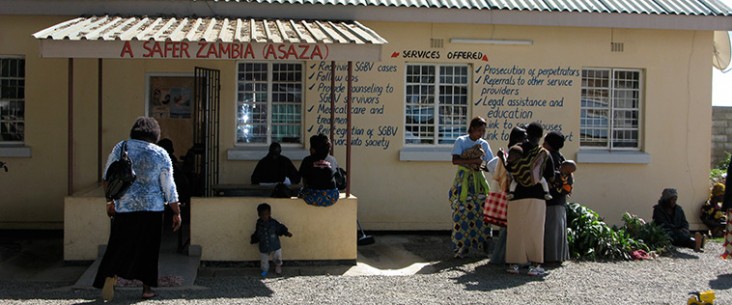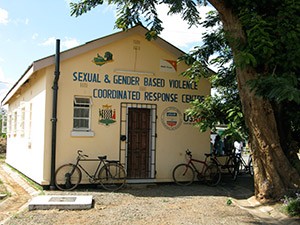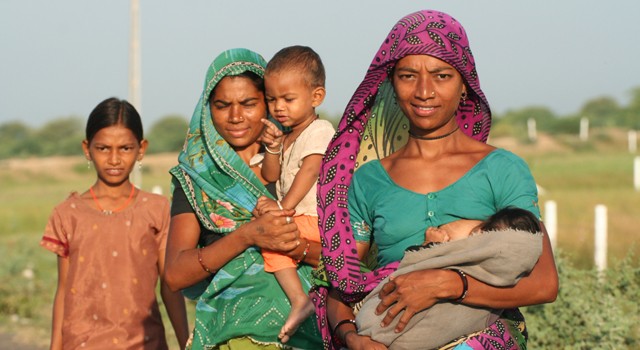- What We Do
- Agriculture and Food Security
- Democracy, Human Rights and Governance
- Economic Growth and Trade
- Education
- Ending Extreme Poverty
- Environment and Global Climate Change
- Gender Equality and Women's Empowerment
- Global Health
- Water and Sanitation
- Working in Crises and Conflict
- U.S. Global Development Lab

A Supportive Policy Environment for Gender Equality
Through the Global Health Initiative, the United States is helping partner countries improve health outcomes, with a particular focus on improving the health of women, newborns and children. GHI reaffirms the U.S. Government’s commitment to gender equality through its principle on Women, Girls and Gender Equality. USAID has played a key leadership role in developing and operationalizing the principle through participation in an inter-agency taskforce, review of GHI country strategies and development of indicators for the monitoring and evaluation of effective programs.
Numerous other policies highlight the U.S. Government and USAID’s commitment to gender equality, including the following:
- Gender Equality and Female Empowerment Policy
- United States Strategy to Prevent and Respond to Gender-Based Violence Globally
- United States National Action Plan on Women, Peace, and Security [PDF, 7.9MB]
- USAID Implementation of the National Action Plan on Women, Peace, and Security [PDF, 324KB]
- Ending Child Marriage and Meeting the Needs of Married Children: The USAID Vision for Action
- PEPFAR Gender Strategy [PDF, 1.5MB]
- LGBT Vision for Action: Promoting and Supporting the Inclusion of Lesbian, Gay, Bisexual, and Transgender Individuals [PDF, 1.3MB]
GENDER-BASED VIOLENCE
In the broadest terms, "gender-based violence" is violence that is directed at individuals based on their biological sex, gender identity, or perceived adherence to culturally-defined expectations of what it means to be a woman and man, girl and boy. It includes physical, sexual, and psychological abuse; threats; coercion; arbitrary deprivation of liberty; and economic deprivation, whether occurring in public or private. GBV is rooted in economic, social, and political inequalities between men and women. GBV can occur throughout the lifecycle, from infancy through childhood and adolescence, the reproductive years and into old age (Moreno 2005), and can affect women and girls, and men and boys, including transgender individuals. Specific types of GBV include (but are not limited to) female infanticide; early and forced marriage, “honor” killings, and female genital cutting/mutilation; child sexual abuse and exploitation; trafficking in persons; sexual coercion, harassment and abuse; neglect; domestic violence; economic deprivation, and elder abuse. (Adapted from the United States Strategy for the Prevention and Response to Gender-based Violence)
CURRENT GENDER INITIATIVES

PEPFAR Gender Challenge Fund
This fund supports field-based initiatives to mainstream gender equality and prevention and response to GBV into existing HIV programs. The Gender Challenge Fund made additional resources available to programs in 18 countries in generalized, mixed and concentrated epidemics in Africa, Asia and Latin America.
Gender-Based Violence Response Scale-Up
In addition to integrating gender throughout all programs, USAID and PEPFAR have invested significant resources and effort on preventing and responding to gender-based violence. USAID is a major partner in PEPFAR’s Gender-Based Violence Response Scale-Up in three countries: Mozambique, the United Republic of Tanzania, and the Democratic Republic of the Congo. The objectives are:
- Move beyond GBV pilots to demonstrate that GBV programs can be brought to scale at the national or regional level
- Offer screening, counseling and post-rape care services for GBV survivors within HIV and AIDS programs
- Support comprehensive and integrated GBV care for victims of violence at health facilities
- Support GBV prevention to address the underlying causes of violence and work across sectors (education, police, judiciary, social services)
- Address policy and structural barriers for women and children
- Advance the knowledge base through support for program and intervention evaluation and improved monitoring of community and clinic-based activities
Past Gender Initiatives

Four PEPFAR Gender Technical Working Group initiatives, totaling over $8 million over 3 years and implemented through USAID, have already been carried out: the Male Norms Initiative, the Sexual and Gender-Based Violence Initiative and the Vulnerable Girls Initiative. Results include a step-by-step guide for setting up post-rape care services, a manual for working with vulnerable girls at various levels and a guide to working with men.
- The Vulnerable Girls Initiative sought to address adolescent girls’ vulnerability to HIV at multiple levels: structural, community and family/peer/individual.
- The Male Norms Initiative built the capacity of organizations and institutions to implement programs that address gender norms affecting HIV and AIDS prevention, care and treatment.
- The Sexual and Gender-Based Violence Initiative sought to strengthen health services for survivors of sexual violence, increase referrals from health facilities to other support services and facilitate access to services by expanding linkages between communities and health services.
DATA AND MEASUREMENT
A series of gender-focused data and monitoring and evaluation resources through MEASURE Evaluation and MEASURE DHS.
Interagency Gender Working Group
A network of NGOs, implementing agencies, USAID and other organizations and donors that promote gender equity.
Gender and Health Toolkit
This toolkit contains resources and methodologies for integrating gender in health programs.
The USAID Learning Lab is collaborative space for USAID partners and staff that has a number of gender e-courses, including Gender 101 and Gender in Evaluation.
The Global Health eLearning Center has a number of e-courses connecting gender and health to USAID programming.
Back to USAID Responds to Gender Inequality and Gender-based Violence >







Comment
Make a general inquiry or suggest an improvement.